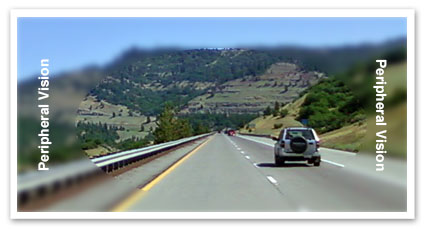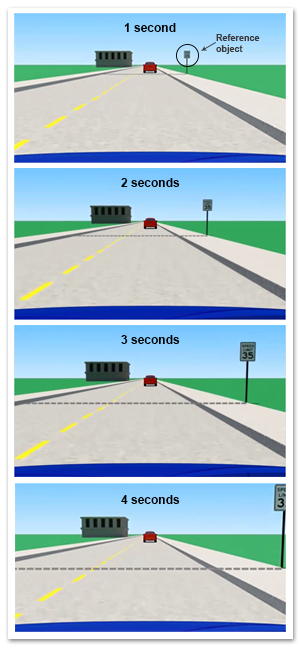Older drivers (i.e., drivers age 65 and older) accounted for 13% of drivers involved in fatal crashes in 2020. Older drivers may have more experience than younger drivers, but their age comes with some additional risks as well.
December 5th through 9th is Older Driver Safety Awareness Week (ODSAW). The American Occupational Therapy Association uses ODSAW to promote the many resources available for older drivers. In support of that goal, here are our 3 safety tips for older drivers.

1. Visit your eye doctor regularly.
Our vision begins to deteriorate as a natural part of the aging process. Vision loss often happens slowly, which means we may not even notice the change. Our field of vision is an important factor when it comes to driving. Field of vision is the area a driver can see while looking straight ahead. This includes central vision and peripheral vision.
Central vision is your clearer, more direct sight, and it corresponds closely with your line of sight. It extends from the center of your vision out, in a 10-degree cone and sends sharply focused pictures to the mind.

Disorders that affect your central vision such as age-related macular degeneration (AMD) is common in people over age 50. AMD causes your central vision to become blurry, making it much more difficult to see the road ahead of you.
Peripheral vision allows you to see out of the corner of your eyes. You do not see objects in your periphery as clearly as objects in your direct line of sight, but peripheral vision does pick up movement and light. We rely on peripheral vision to support several tasks while driving, such as maintaining our speed and position within our lane, and keeping track of the vehicles around us.

Loss of peripheral vision is common among older drivers, and it’s a bit harder to notice when you start to lose it. Losing your peripheral vision makes maneuvers like switching lanes, turning (especially left turns), and noticing pedestrians starting to enter crosswalks much more difficult.
Some older drivers can simply get glasses to help keep them safe on the road. Check out our article detailing the vision requirements for drivers in every state for more information.
2. Give yourself more time to react on the road.
Studies have found that it takes older drivers much more time to react to hazards on the roadway then younger drivers. One of the ways older drivers can compensate for this is to increase their following distance.
In ideal conditions, experienced drivers should keep two to four seconds between their vehicle and the vehicle in front of them. This gives them enough time to stop in case of emergency.
Because of the differences in reaction time, older drivers should increase their following distance in ideal conditions by slowing down and leaving four to six seconds between their vehicle and the vehicle ahead of them.
To calculate your following distance, select a fixed object on the road, such as a sign, tree, or overpass. When the vehicle ahead of you passes the object, count the seconds it takes you to reach the same object.
If you reach the object before you’ve counted to four (one-thousand-one, one-thousand-two, one-thousand-three, one-thousand-four), you’re too close. Slow down and pick a new object for the vehicle ahead of you, then count again.

In adverse conditions such as heavy traffic or poor weather, double your normal following distance.
3. Complete a mature driver improvement course.
The best way to brush up on your driving skills as you age is to complete a mature driver improvement course. Safe2Drive offers the perfect courses for mature drivers.
Our convenient online courses are a fast and easy way to make sure you’re staying safe on the road over the years. And don’t worry--our online courses are simple to navigate. If you have any issues when completing the online course, our staff is available 7 days a week to help you! You can call us and speak to a real person who will be happy to assist you.
As drivers age, it’s important for them to keep these safety tips in mind. We hope this helps you or your loved ones stay safe out there!
Want to learn more?
Are you looking for defensive driving and traffic school courses, but you’re not a mature driver? Do you want a discount on your auto insurance? Do you have a teen who’s ready to take an online driver education course?
Safe2Drive is here to help! We offer convenient online courses for drivers of any age! Visit our website today to learn about the online courses we offer in your state.